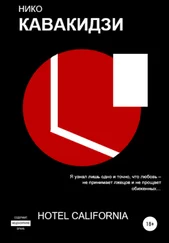While Institution A was located in a nice white neighborhood, the surrounding neighborhoods were communities of colored people, mostly black and yellow. Families from these neighborhoods sent a few students to the university, but other colored students came from across the state. Colored students didn’t want to be factory products either, but they didn’t mince words about the blueprint or being free individuals; they simply wanted to control the production itself. They wanted their own classes, their own professors, their own rules, and more of themselves at the university. They argued that their history of slavery, genocide, and racial prejudice gave moral imperative to their demands, and that a public institution of learning should provide an equal opportunity for education for all citizens, regardless of race, class, or creed. And they were going to get it by any means necessary.
One day, a famous black author and leader of a black organization came to teach at the university. He aroused a crowd of students into shouting Fuck the Governor! Fuck the Governor! To anyone who wanted to throw bricks into the gears, this was a splendid brick. Institution A decided that this man would not continue to teach at the university. His rally was not the entire reason for his dismissal, but it was a convenient rallying point. The colored students organized a protest against Institution A to push for control of their education. They organized a strike to stop the work of the university since, after all, it was a factory, and they were the worker-products. The colored students were a very small minority on campus, but the white students, the faculty, and even the staff also joined the strike. After fifty-three days of striking and four hundred arrests, including violent encounters with local police, sheriffs, and the National Guard, involving rocks, fruits, mace, tear gas, and billy clubs, Institution A agreed to establish a department of ethnic studies.
Establishment of the department came with some fanfare and a budget just substantial enough to create a sensation of power and competition, creating political fissures between black, brown, yellow, and red students and faculty, throwing into contest what had once been idealized as a rainbow of colored solidarity. The radical white students who had wanted to throw their bodies against the gears and the black leader who could rally thousands of students to yell Fuck the Governor! had fallen away, leaving the work of education to the bureaucrats and the folks who needed the jobs. Despite these difficulties, Institution A survived this period of turmoil.
On the other side of the bay, Institution B considered itself a teaching college, a middling institution in a tiered system that kept the research factory on top and the two-year technical college on the bottom. Institution B was the meat in the sandwich positioned to provide the middle management, midlevel professionals, the credentialed workers of the great society. This was part of the Master Plan. The idea that there was a master plan planned by masters outside the college didn’t go over too well with the students, who protested that the plan was really much broader and began in grammar school when children were placed on tracks that headed to one of the three tiered educational institutions, to a possible fourth (prison) or fifth institution (military), or to none at all. If Institution A invoked the automobile, Institution B invoked the train. The Master Plan was a great train system chugging students along predetermined tracks. The train model was probably the wrong model to choose, especially since many of the students were the children of laborers who laid tracks, built cars, loaded cargo, harvested or cooked food, cleaned compartments, and mined the fuel.
While Institution B was located in a nice white neighborhood, the surrounding neighborhoods were communities of working-class white and colored people—black, yellow, and brown. Working young adults from these neighborhoods attended the college, and more came from across the state. Colored students didn’t want to be part of any master plan either, especially if being colored might put you on a particular train from the very beginning. And they weren’t interested in sharing; sharing had only gotten them nine hundred black students in eighteen thousand. They wanted to make their own plans. They wanted their own rules, their own classes, their own professors, and more of themselves at the college. They argued that their history of slavery, genocide, and racial prejudice gave moral imperative to their demands, and that a public institution of learning should provide an equal opportunity for education for all citizens, regardless of race, class, or creed. And they were going to get it by any means necessary.
One day, a black instructor at Institution B, who was also a leader of a black organization, gave a speech. He said that Institution B was a nigger-producing factory and called upon students to Pick up the Gun! to defend themselves against a cracker administration. While this may have been a passionate cry to revolution, Institution B decided that he should be fired from teaching at the college. His speech was not the entire reason for his dismissal, but it was a rallying point, and eventually the colored students organized a protest against Institution B to push for control of their education. They organized a strike to stop the work of the college since, after all, it was a train station, and they were the worker-passengers. The colored students were a very small minority on campus, but the white students and the faculty also joined the strike. After 137 days on strike and nine hundred arrests, including violent encounters with local and mounted police and tactical squads involving rocks, bombs, arson, and billy clubs, Institution B agreed to establish a department of ethnic studies.
Establishment of the department came with some fanfare and a budget just substantial enough to create a sensation of power and competition, creating political fissures between black, brown, and yellow, throwing into contest what had once been idealized as a rainbow of colored solidarity. The radical white students who had opposed the Master Plan and the black teacher who rallied students to Pick up the Gun! had fallen away, leaving the work of education to the bureaucrats and the folks who needed the jobs. Despite these difficulties, Institution B survived this period of turmoil.
These are textbook cases with semantic morals. In both cases, students got what they wanted: a department of ethnic studies. But it wasn’t about what they wanted—it was about how they went about getting it. In this sense, it was all about words.
Reread the stories about Institutions A and B. Instead of worrying about whether colored students had equal access to higher education, ask yourself the following questions:
1.What is the significance of comparing Institution A to a factory or Institution B to a train station, and how do these comparisons influence the actions of the students?
2.What do you think about the provocative comments made by the black leaders to students at both institutions?
3.Is it possible or reasonable for students to go on strike?
4.Why does the narrator use the word black instead of Negro?
5.Considering the disagreements between the students and the institutions, was the violence incurred necessary?
6.Was the conflict between the students and institutions a war of words?
Jazz was our acting president’s great passion. In his twenty-part jazz seminar, he spoke about the sources and characteristics of jazz, from the blues, through bebop, boogie-woogie, and gospel, to the California-New Orleans revival. Everyone had forgotten that he played the harmonica.
Читать дальше












